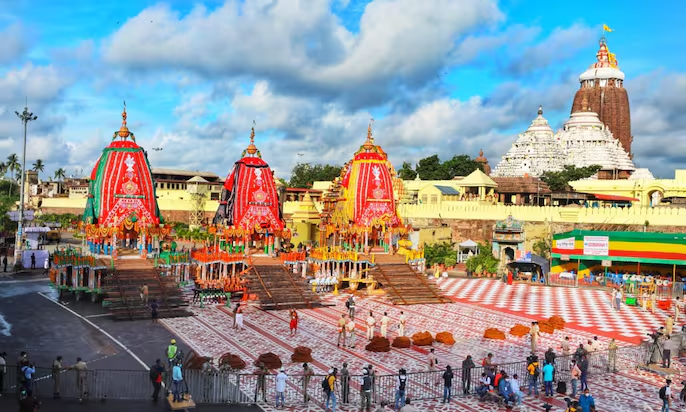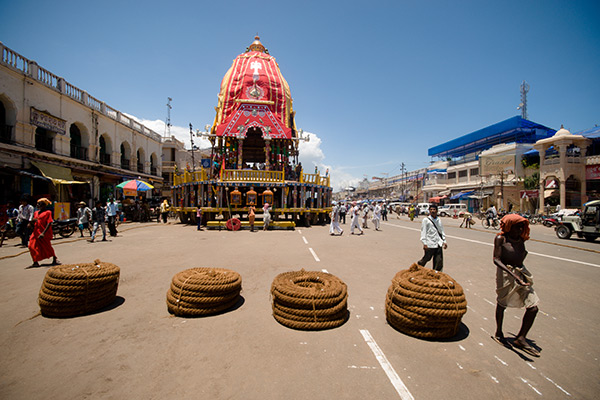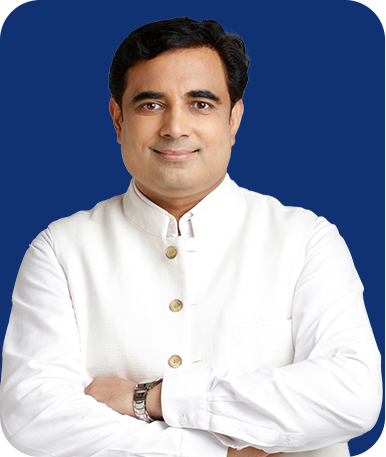
Jagannath Puri Rath Yatra is one of India’s most vibrant and significant festivals. Held annually in the holy city Puri, Odisha, this festival attracts millions of devotees and tourists from all over the country.
The Rath Yatra, also known as the Festival of Chariots, celebrates Lord Jagannath, his brother Balabhadra, and his sister Subhadra’s annual journey from their temple to the Gundicha Temple. This journey symbolizes the divine visit to their birthplace.
This blog dives into all the essential details about Jagannath Puri Rath Yatra 2024, including the date and time, history, rituals, visitor information, and much more. So, let’s get started and explore the grandeur of this incredible festival.
Date and Time of Jangannath Puri Yatra
The Jagannath Puri Rath Yatra in 2024 is set to take place on July 8th. The excitement in the air will be palpable as the preparations kick into high gear days in advance. The Yatra officially begins early, around 8 AM, when the deities are brought out of the Jagannath Temple amidst chants, music, and enthusiastic shouts of “Jai Jagannath!”
Key events to watch out for include the “Pahandi,” the ceremonial procession in which the deities are carried to their chariots, and the “Chhera Pahanra,” where the Gajapati King of Puri sweeps the chariots with a golden broom, symbolizing that everyone is equal in the eyes of Lord Jagannath. These rituals are followed by the actual pulling of the chariots, a sight to behold as thousands of devotees eagerly pull the massive, beautifully decorated raths through the streets of Puri.
Mark your calendars and set your alarms, as you wouldn’t want to miss any part of this divine and electrifying event!
History Behind Jagannath Rath Yatra:
The history of the Jagannath Puri Rath Yatra is as fascinating as the festival itself. This grand event dates back centuries and is deeply rooted in mythology and tradition. According to ancient legends, the Rath Yatra commemorates Lord Jagannath’s annual visit to the Gundicha Temple, believed to be the birthplace of the deity. This journey symbolizes the return of Lord Krishna (Jagannath) to his childhood home in Vrindavan.
The Rath Yatra is mentioned in several ancient texts, including the Puranas, which describe its grandeur and significance. Historical records suggest that the festival has been celebrated since the 12th century, coinciding with King Anantavarman Chodaganga Deva’s construction of the Jagannath Temple.
Over the years, the festival has evolved, but its core essence remains the same. It’s not just a religious event but a massive cultural celebration that brings together people from all walks of life. The participation of the Gajapati Kings of Puri in the rituals, particularly the Chhera Pahanra, highlights the festival’s historical importance and the unbroken tradition that continues today.
The Rath Yatra’s rich history is a testament to the people’s enduring devotion and Lord Jagannath’s timeless appeal, which attracts millions to Puri every year.
Routes of Jagannath Rath Yatra 2024:

The route of the Jagannath Rath Yatra is a well-defined path that holds immense spiritual significance. Here’s a detailed look at the journey the chariots will undertake in 2024:
Starting Point: Jagannath Temple
- Location: The journey begins at the Jagannath Temple, located in the heart of Puri. The temple is a revered site and one of the Char Dhams of Hinduism.
- Rituals: The day starts with elaborate rituals and the ceremonial procession known as the “Pahandi,” where the deities are brought out of the temple.
Grand Road (Bada Danda)
- Main Stretch: The chariots travel down the Grand Road, also known as Bada Danda, which is the main artery of Puri. This broad, bustling road is lined with thousands of devotees eager to catch a glimpse of the deities.
- Landmarks: Key landmarks along this route include the Ratha Khala, where the chariots are constructed, and the Gundicha Temple, the final destination.
Gundicha Temple
- Destination: The chariots’ journey culminates at the Gundicha Temple, about 3 kilometers from the Jagannath Temple. This temple is considered to be the birthplace of Lord Jagannath.
- Stay: The deities stay here for seven days, during which various rituals and ceremonies are performed.
Return Journey: Bahuda Yatra
- Route: After their stay at the Gundicha Temple, the deities embark on the return journey, known as the Bahuda Yatra, following the same route back to the Jagannath Temple.
- Mausi Maa Temple Stop: On the way back, the chariots stop at the Mausi Maa Temple (Aunt’s temple), where the deities are offered Poda Pitha, a special type of cake believed to be a favorite of Lord Jagannath.
The route of the Rath Yatra is not just a physical path but a spiritual journey for the millions who participate in or witness this grand event. The streets of Puri transform into a vibrant tapestry of faith, devotion, and celebration, making the Rath Yatra a truly unforgettable experience.
The Rituals and Celebrations of Jagannath Puri Rath Yatra 2024
The rituals and celebrations of the Jagannath Puri Rath Yatra blend devotion, tradition, and sheer grandeur. The festival kicks off with the construction and decoration of three gigantic chariots for Lord Jagannath, his brother Balabhadra, and sister Subhadra. These chariots, known as Nandighosha, Taladhwaja, and Darpadalana, are constructed yearly using specific types of wood. Skilled artisans and craftsmen work tirelessly for weeks to ensure perfect detail.
The primary day of the Rath Yatra begins with the “Pahandi” procession. Amidst “Hari Bol” and “Jai Jagannath chants,” the deities are ceremonially brought out of the temple and placed onto their respective chariots. Seeing these colossal, ornately decorated raths and the deities being carried with such reverence is genuinely awe-inspiring.
One of the most significant rituals is the “Chhera Pahanra,” where the Gajapati King of Puri sweeps the chariots with a golden broom in a gesture of humility. This act symbolizes that everyone, irrespective of their status, is equal in the eyes of the Lord. Following this, thousands of devotees pull the chariots through the streets of Puri towards the Gundicha Temple, a journey that covers about three kilometers.
The atmosphere during the Yatra is electric. Devotees sing bhajans, dance joyfully, and offer prayers, creating a vibrant and spiritually charged environment. The entire town of Puri transforms into a sea of devotion and festivity, with people from all over the country coming together to witness and participate in this divine journey.
The return journey, known as the Bahuda Yatra, occurs after the deities spend a week at the Gundicha Temple. The deities then stop at the Mausi Maa Temple before returning to the Jagannath Temple, completing the grand cycle of this revered festival.
Important Details for Visitors
Visiting Puri during the Jagannath Rath Yatra is a unique and memorable experience. Here are some important details to help you make the most of your visit:
Travel Tips
- Getting There: Puri is well-connected by rail and road. The nearest airport is in Bhubaneswar, about 60 kilometers away. From there, you can take a taxi or a bus to Puri.
- Local Transport: Auto-rickshaws, cycle rickshaws, and taxis are readily available in Puri. Due to heavy crowds and traffic restrictions, walking might be the best option during the Rath Yatra.
Accommodation
- Hotels: Puri has numerous hotels ranging from budget to luxury. Booking well in advance is highly recommended as the town gets very crowded during the festival.
- Dharamshalas: Many dharamshalas and guesthouses offer budget-friendly options, particularly convenient for pilgrims.
Safety Tips
- Crowd Management: The Rath Yatra attracts huge crowds. Stay with your group, keep an eye on your belongings, and be mindful of pickpockets.
- Health Precautions: Stay hydrated, wear comfortable clothing, and carry any necessary medications. The weather can be quite hot and humid in July.
- Emergency Contacts: Keep a list of emergency contact numbers handy, including local police, hospital, and your accommodation.
Best Spots to Watch
- Grand Road (Bada Danda): This is the main route of the Rath Yatra. Arrive early to secure a good spot.
- Rooftops and Balconies: Some hotels and buildings offer rooftop or balcony views for a better vantage point. These spots often come with a fee.
Local Customs and Etiquette
- Dress Modestly: Dress modestly, especially when visiting temples, as a mark of respect for the local culture and traditions.
- Respect Rituals: Respect the ongoing rituals and ceremonies. Follow the instructions of local authorities and volunteers.
- Photography: While taking photos is generally allowed, avoid interrupting any rituals. Always ask for permission before photographing people.
Experiencing the Rath Yatra is a once-in-a-lifetime opportunity. With some planning and these tips in mind, you can enjoy the festival while respecting the local customs and ensuring your safety.
Conclusion
The Jagannath Puri Rath Yatra is more than just a festival; it is a vibrant celebration of faith, tradition, and community. From the meticulous preparations and grand rituals to the cultural and economic impact on Puri, the Rath Yatra embodies the spirit of devotion and unity. Whether you are a first-time visitor or a seasoned devotee, witnessing the chariots’ majestic journey and participating in the festivities is a profound and unforgettable experience.
The Rath Yatra 2024 promises to be as spectacular as ever, offering a unique opportunity to immerse yourself in the rich cultural heritage of India. As you plan your visit, keep in mind the essential details, respect the local customs, and embrace the joyous atmosphere that envelops Puri during this time.
We hope this guide helps you navigate the festival with ease and adds to the excitement of experiencing one of India’s most revered and grandest celebrations. Jai Jagannath!
For deeper insights into the spiritual significance of Rath Yatra and how it may impact your life, consider consulting Pt. Pawan Kaushik, the best astrologer in Gurgaon. His expert guidance can help you align your visit with astrological influences for a more meaningful experience.
FAQs
1. What is the significance of the deities’ outfits during the Rath Yatra?
Ans: The deities are adorned in different outfits each day of the Rath Yatra, symbolizing various aspects of their divine personalities. This change of attire is an important ritual and adds to the visual splendor of the festival.
2. Are there any specific food items or prasad to try during the Rath Yatra?
Ans: Yes, the Mahaprasad of Jagannath Temple, particularly the Poda Pitha, a special cake offered to the deities, is a must-try. Various stalls and local eateries also offer traditional Odia delicacies.
3. What is the story behind the Gundicha Temple?
Ans: The Gundicha Temple is believed to be the birthplace of Lord Jagannath. The deities stay here for seven days during the Rath Yatra, representing their annual visit to their birthplace.
4. Is there any special arrangement for senior citizens or differently-abled people?
Ans: Yes, there are special viewing areas and arrangements to ensure that senior citizens and differently-abled individuals can comfortably participate in and witness the Rath Yatra.
5. How can I volunteer or participate in the Rath Yatra preparations?
Ans: Many local organizations and the temple administration welcome volunteers to assist with various tasks during the Rath Yatra. You can contact the Jagannath Temple administration or local community groups to get involved.
6. What kind of souvenirs can I buy during the Rath Yatra?
Ans: You can buy a variety of souvenirs such as miniature chariots, Jagannath idols, traditional handicrafts, and textiles. These items make for great mementos and gifts.
7. What are the medical facilities available during the festival?
Ans: Temporary medical camps and first-aid stations are set up along the Rath Yatra route to provide immediate medical assistance. Major hospitals in Puri are also on alert to handle emergencies.
8. Are there any special ceremonies or events at night?
Ans: Yes, the Jagannath Temple and the Gundicha Temple often host special evening prayers and cultural programs during the Rath Yatra period. These events provide a deeper insight into the spiritual and cultural aspects of the festival.
9. How is the crowd managed during the Rath Yatra?
Ans: The local authorities and police department implement extensive crowd control measures, including barricades, surveillance cameras, and the deployment of security personnel, to ensure the safety of all participants.
10. Can I visit the Jagannath Temple on non-Yatra days to see the deities?
Ans: While the deities are away at the Gundicha Temple during the Rath Yatra, you can still visit the Jagannath Temple and experience its serene atmosphere. Visiting during non-Yatra days also allows for a more peaceful and less crowded experience.
 +91 9990176000
+91 9990176000 +91 9999097600
+91 9999097600
 CALENDAR 2024
CALENDAR 2024











